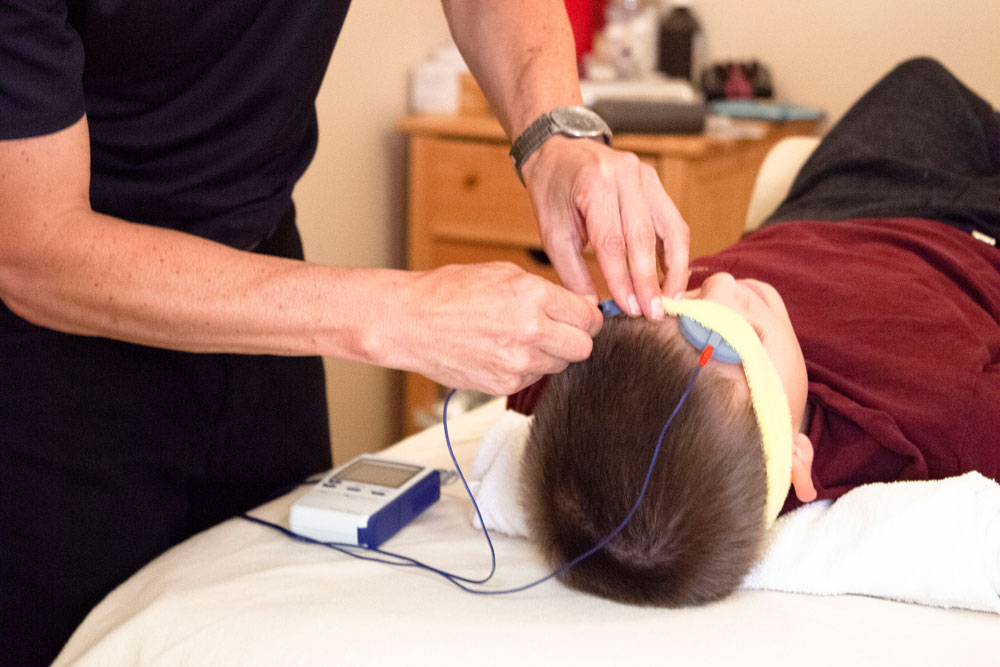Introduction
In the evolving landscape of eye health, transorbital microcurrent stimulation (TMCS) stands out as a promising technology for vision care. This innovative treatment offers potential benefits for a wide range of ocular conditions by applying weak electrical signals to stimulate the eye’s visual system.
What is Transorbital Microcurrent Stimulation?
Transorbital microcurrent stimulation, or TMCS, is a form of neurovascular stimulation that involves sending micro-level electrical currents to the visual system. This includes the retina, optic nerve, and the visual cortex of the brain. The procedure uses small electrodes placed on the skin near the eyes to deliver these currents, which are so mild they are often barely perceptible to the patient.
Anatomy and Effect on Vision:
The human eye is a complex organ, reliant on a delicate balance of cells, nerves, and blood supply. The retina, which captures light and converts it into neural signals, and the optic nerve, which transmits these signals to the brain, are critical components directly influenced by MCS. By targeting these areas, MCS aims to enhance cellular metabolism and nerve function, crucial for maintaining and improving vision.
Scientific Basis of MCS:
At the core of MCS is the principle of neurovascular stimulation. The therapy uses carefully controlled electrical currents (microamperes) to stimulate the neurovascular system of the eye. These currents enhance blood flow and oxygen supply, support cellular repair, and encourage neuroplasticity in the visual cortex—where visual information is processed. This increased activity helps rejuvenate dormant cells, bolster cellular function, and improve the overall health of the visual pathways.
Lifestyle Integration for Enhanced Effects:
Incorporating MCS into a broader lifestyle regimen can significantly amplify its benefits. Consider these lifestyle adjustments to support your vision health:
- Diet and Nutrition: Focus on a diet rich in antioxidants, which can help combat oxidative stress in the visual system. Foods high in vitamins C and E, lutein, and zeaxanthin—such as leafy greens, eggs, nuts, and citrus—can be particularly beneficial.
- Regular Exercise: Physical activity can improve blood circulation, which is vital for maintaining healthy eye function. Activities like walking, cycling, and yoga not only improve overall health but also increase blood flow to the ocular structures.
- Visual Hygiene: Regular breaks during screen time, proper lighting while reading, and wearing sunglasses to protect against UV rays can prevent overstrain and contribute to long-term eye health.
- Stress Management: Since stress can negatively impact vision, practices like meditation, deep breathing, and mindfulness can help maintain a balanced autonomic nervous system, supporting eye health.
How Does It Work?
The fundamental mechanism of TMCS involves enhancing the neural and vascular functions of the eye. By stimulating the retinal cells, macular cells, and the overall neurovascular network, including the optic nerve and visual cortex, TMCS aims to improve vision by:
- Enhancing blood flow and nutrient delivery to the visual system.
- Stimulating cellular activity and health, particularly in the retina and optic nerve.
- Encouraging the regeneration and repair of visual pathways.
Benefits of TMCS
The application of TMCS has shown promising results in improving various ocular conditions. These benefits include:
- Increased circulation to the eyes, which is crucial since the retina is one of the most metabolically active tissues, requiring high levels of oxygen.
- Stimulation of dormant retinal and optic nerve cells, akin to recharging a battery, which can rejuvenate weakened visual functions.
- Enhanced removal of ocular metabolic waste, which can prevent or alleviate conditions like macular degeneration.
Clinical Evidence and Safety
Transorbital microcurrent stimulation has been studied and applied in clinical settings for over 30 years, with studies indicating significant improvements in conditions like dry macular degeneration. Importantly, TMCS treatments are known for their safety, with minimal to no side effects reported in the majority of cases.
Who Can Benefit?
Patients with various degenerative ocular conditions stand to benefit the most from TMCS. This includes individuals suffering from:
- Macular degeneration (both dry and wet types)
- Glaucoma and optic nerve atrophy
- Retinal diseases such as retinitis pigmentosa and related dystrophies
Who Should Avoid TMCS?
Despite its broad applicability, TMCS is not suitable for everyone. It is typically advised that individuals with the following conditions avoid this treatment:
- Known seizure disorders or epilepsy
- Metastatic brain tumors
- Uncontrolled high eye pressure
- Severe migraines, as the stimulation could potentially trigger a migraine
Integrating TMCS into a Holistic Vision Care Approach
For optimal results, TMCS should be part of a comprehensive eye care strategy. This includes proper nutrition, targeted supplements, regular eye exercises, and lifestyle adjustments that support overall eye health. Integrating these elements can enhance the effectiveness of TMCS and contribute to long-term vision preservation and improvement.
Conclusion
Transorbital microcurrent stimulation represents a significant advance in non-invasive eye care treatments. Its ability to enhance the underlying neurovascular functions of the eye makes it a valuable tool in the management of various ocular conditions. With its excellent safety profile and potential for significant vision benefits, TMCS is an option worth considering for those looking to preserve and improve their vision health effectively.





